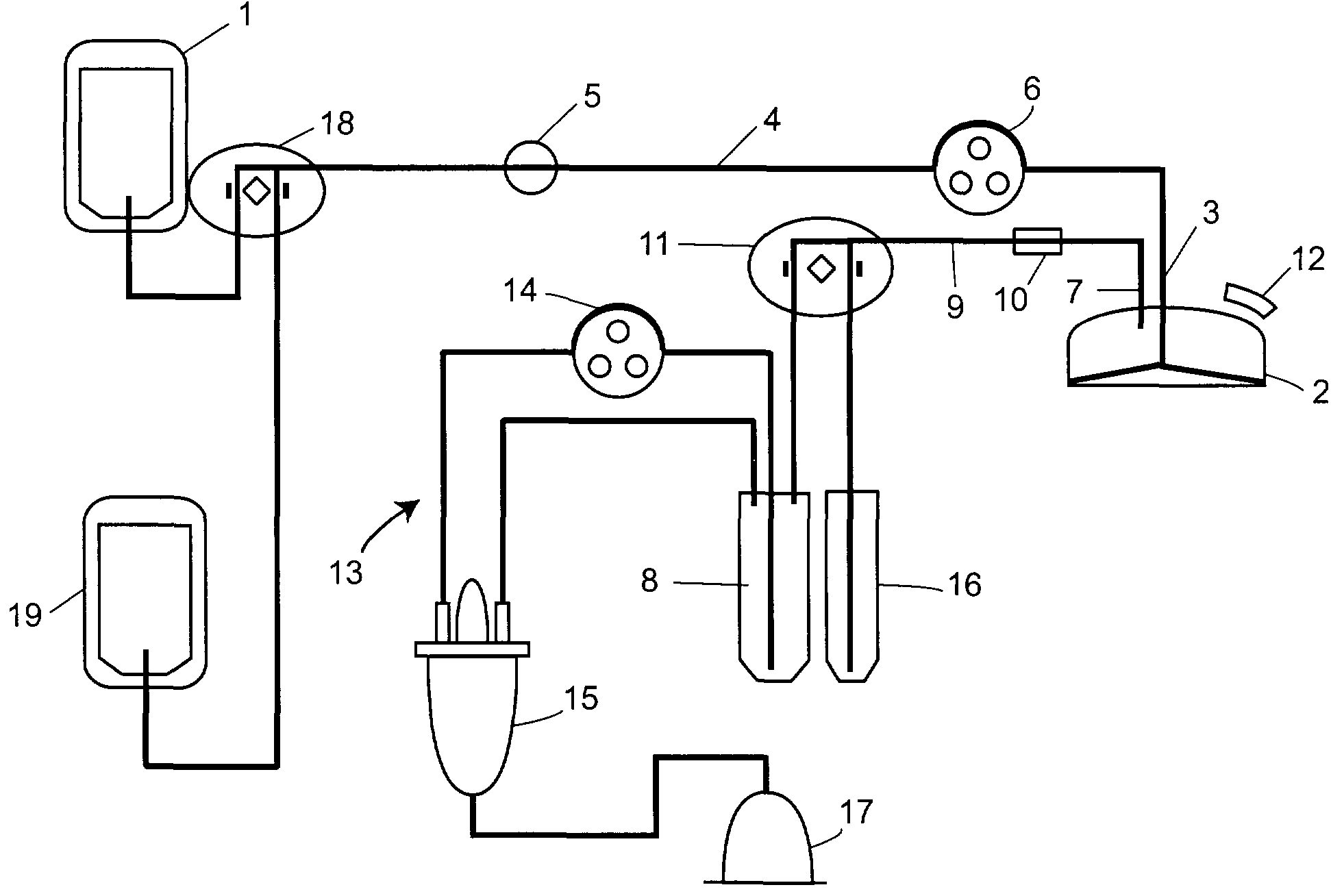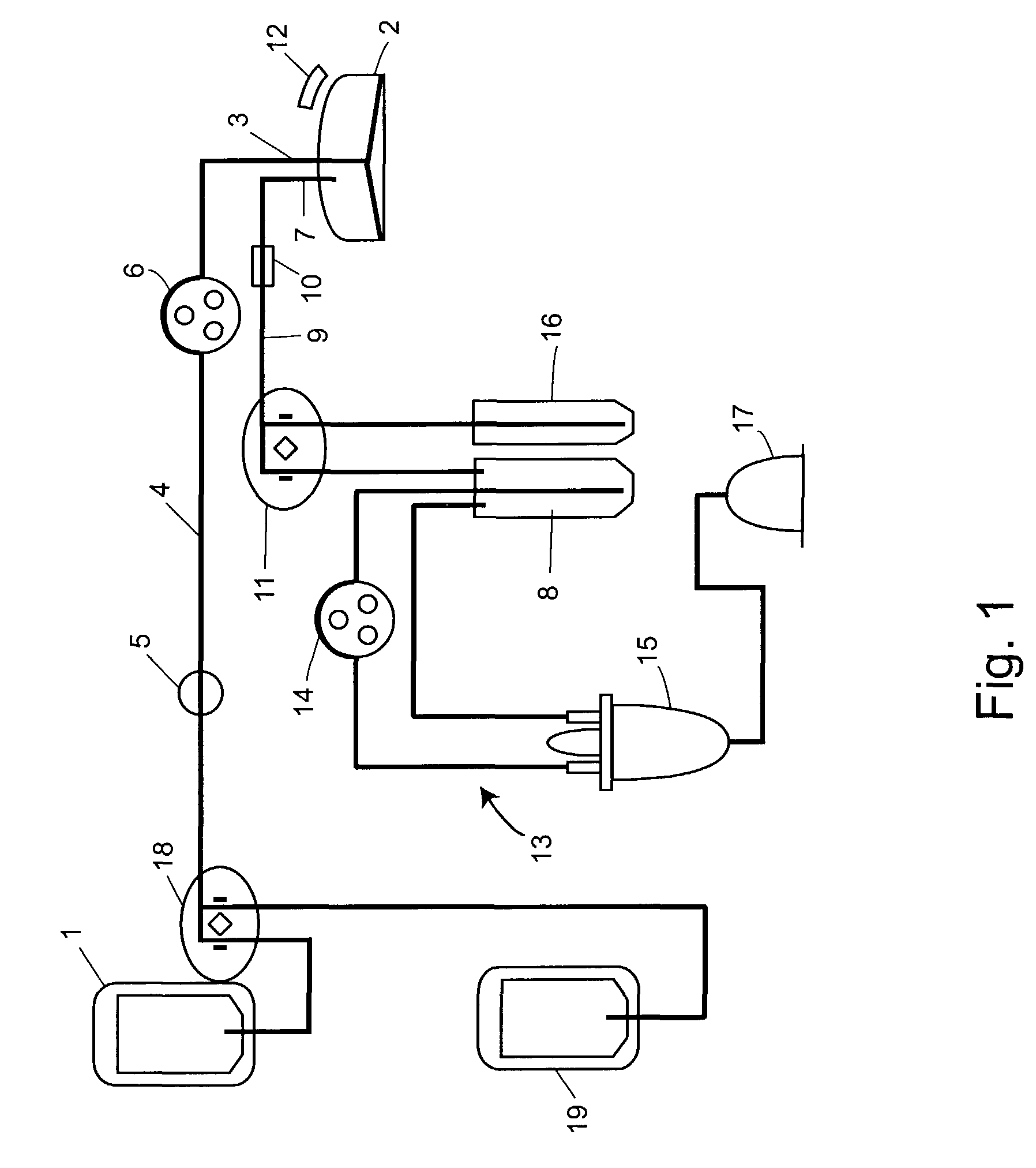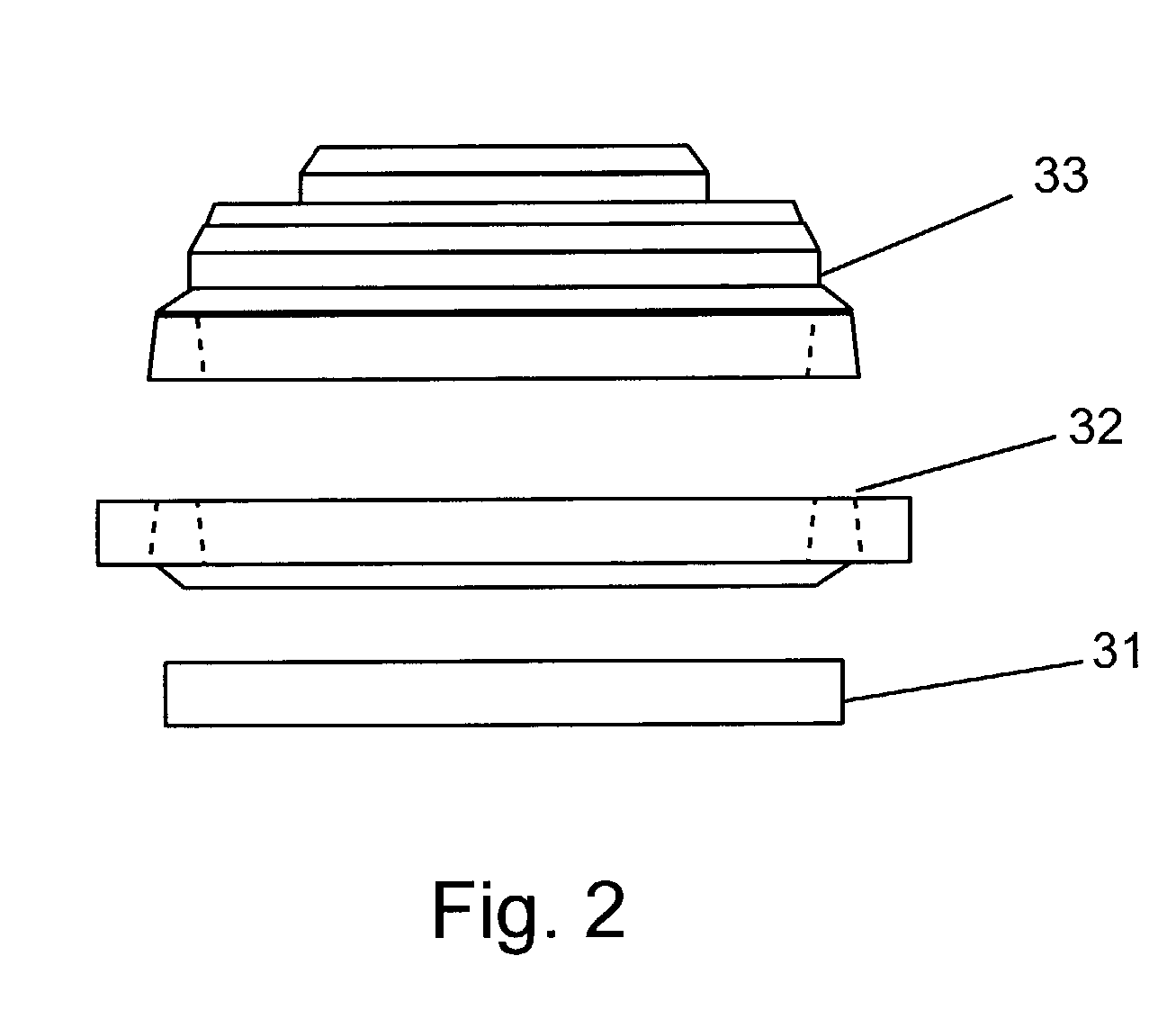Blood separation and concentration system
a concentration system and blood technology, applied in separation processes, centrifuges, membranes, etc., can solve the problems of time and effort, plasma does not have the properties of adequate fibrin glue, and the concentration of fibrinogen in filtered plasma is too low to act as an effective wound sealant, etc., to achieve the effect of easy loading into the apparatus
- Summary
- Abstract
- Description
- Claims
- Application Information
AI Technical Summary
Benefits of technology
Problems solved by technology
Method used
Image
Examples
Embodiment Construction
[0054]The present invention provides a compact automated system to, e.g., separate blood into components, collect selected components, and to concentrate components. The invention is intended to provide concentrated blood components, e.g., concentrated buffy coat for use in purification of growth factors, autologous platelet gel, wound healants / sealants or bone growth matrixes. Components of the apparatus can be provided in a sterile, aseptically sealed, disposable kit. The invention consistently provides desired blood components without waste.
The Apparatus
[0055]The apparatus of the invention can, e.g., load the blood onto a rotating separation disc, collect lower density blood components, concentrate the blood components, remove higher density components from the disc to a holding container and repeat the process. The apparatus can include a control system with associated software, detectors and actuators to flexibly process a variety of cell suspensions into separated components a...
PUM
| Property | Measurement | Unit |
|---|---|---|
| Fraction | aaaaa | aaaaa |
| Mass | aaaaa | aaaaa |
| Mass | aaaaa | aaaaa |
Abstract
Description
Claims
Application Information
 Login to View More
Login to View More - R&D
- Intellectual Property
- Life Sciences
- Materials
- Tech Scout
- Unparalleled Data Quality
- Higher Quality Content
- 60% Fewer Hallucinations
Browse by: Latest US Patents, China's latest patents, Technical Efficacy Thesaurus, Application Domain, Technology Topic, Popular Technical Reports.
© 2025 PatSnap. All rights reserved.Legal|Privacy policy|Modern Slavery Act Transparency Statement|Sitemap|About US| Contact US: help@patsnap.com



